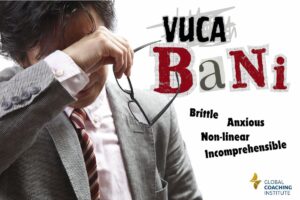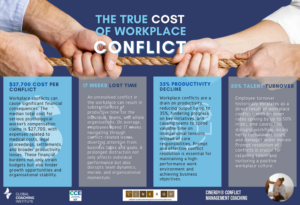So, how can you get off the Not-So-Merry-Go-Round of Conflict? In my last post I explored how conflict begins – when our sense of identity, values and needs are challenged and we get triggered.
Confronted by the disturbance we feel when our body is flooded with cortisol and other stress hormones, it’s human nature to want to make sense of what’s happening. Humans need to explain what led to these impacts.
With our primitive emotional brain screaming out that we are in danger we quickly develop a view of the situation that paints ourselves as the innocent victim, while the apparent source of our distress emerges as the classic evil villian.
Anyone recognise what I’m talking about? Think about the last time you discussed a hot conflict. If it was a film script how would you cast yourself? How would you cast the other person? Who comes out looking better? Chances are your narrative is flavored with a little self-serving bias.
I don’t know why we like such simple plot lines when it comes to conflict. Certainly they express our sense of vulnerability. However, I’m not so sure that they speak adequately to the level of disappointment that arises when we invest in something that doesn’t come off or the anxiety we can feel about our future or our reputation. The story is usually about what happened. Who did what, without shedding light on what we need.
Our classic heroes and villian stories reflect the brain’s primitive threat response.
The problem is that this logic is distorted and it rarely serves us.
In order to get off the Not-So-Merry-Go-Round of Conflict we need to develop a more nuanced understanding of the situation. Perhaps the first step is to become aware of the narrative you are engaged in. Otherwise, as we continue to tell the story, we start to believe in and remember the events vividly the events described narrative, forgetting everything that doesn’t feature in the story we tell ourselves or our friends.
As a practitioner working with people in conflict, it’s remarkable how different the accounts of what happened that are given by various parties to a dispute can be. It’s enough sometimes to leave a listener wondering if they are in fact describing the same event. Yet each is equally convinced of their interpretation and their rightness about it.
In conflict situations most of us garner a selective view of events, heavily laden with interpretations that we then regard as fact.
Untangling our conflicts therefore involves teasing out the threads of the story we are telling ourselves and re-examining them, in order to achieve new insights and understandings. Conflict Management Coaches support clients to think about any assumptions or interpretations they might have made about their conflict situation, encouraging them to look for other possible explanations.
A great deal of hurt arises in conflicts when we feel we have been misunderstood. If you can pull out of your story and question your assumptions and those one-sided, perhaps even demonising thoughts you are having about the other party, you can avoid the hurt and collateral damage that comes when we lose our empathy in the struggle to hold onto being vindicated or right.
Next time you find yourself in conflict:
- Try to open up your thinking.
- Notice any self-serving bias.
- Watch your tendency to attribute motivation and intent to others.
- Ask yourself: “What other explanations might there be.” Don’t stop until you’ve come up with three or four options.
- Challenge your own story by asking yourself: “How might a neutral observer describe the situation?”
- Ask yourself how you can find out more about what is actually happening for the other person.
In my next post I will explore the final part of the Not-So-Merry-Go-Round – Making Choices and Taking Action.
If you’re curious to know more, then take a listen to this excerpt from a recent interview.
If you’re interested to know more about Conflict Management Coaching or would like to train as a Conflict Management Coach, book a call.





